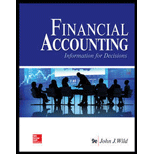
1.
Concept Introduction:
Accounting has formula that represents assets is equal to the liabilities plus owner’s equity. Each year owner’s equity is calculated by after reducing and adding the profit or loss of the year. Net Income or profit is calculated by reducing expenses from revenues.
To Calculate:
Return on assets.
2.
Concept Introduction:
Accounting has formula that represents assets is equal to the liabilities plus owner’s equity. Each year owner’s equity is calculated by after reducing and adding the profit or loss of the year. Net Income or profit is calculated by reducing expenses from revenues.
To Calculate:
Successful in total sales.
3.
Concept Introduction:
Accounting has formula that represents assets is equal to the liabilities plus owner’s equity. Each year owner’s equity is calculated by after reducing and adding the profit or loss of the year. Net Income or profit is calculated by reducing expenses from revenues.
To Calculate:
Successful in return over assets.
4.
Concept Introduction:
Accounting has formula that represents assets is equal to the liabilities plus owner’s equity. Each year owner’s equity is calculated by after reducing and adding the profit or loss of the year. Net Income or profit is calculated by reducing expenses from revenues.
To Calculate:
One paragraph on over which company is better for the option of investment.
Want to see the full answer?
Check out a sample textbook solution
Chapter 1 Solutions
Loose Leaf for Financial Accounting: Information for Decisions
- Principles of Accounting Volume 2AccountingISBN:9781947172609Author:OpenStaxPublisher:OpenStax College



